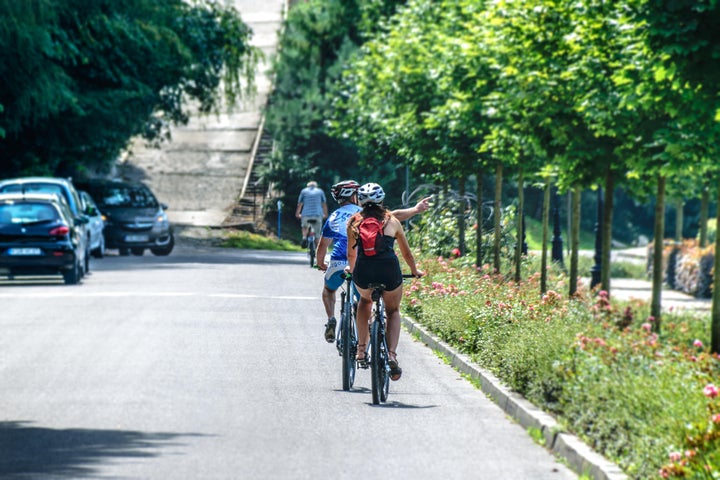
Digital tech will make many city spaces redundant: artificial intelligence doesn’t care where it works; autonomous vehicles don’t care they where they park. These spaces must be repurposed for cities to thrive in the future.
Obsolete Urban Spaces
I recounted in last month’s blog how ride hailing and self-driving cars will dramatically reduce the space needed for parking, how online retail will leave shops struggling, how traditional offices will be replaced by flexible, cloud-based working.
Former Uber CEO Travis Kalanick is already on this, announcing that his next company will take distressed real estate assets - like abandoned strip malls, parking lots or factories - and turn them into spaces suited for new industries, such as food delivery or online retail. “There are over $10 trillion in these real estate assets that will need to be repurposed for the digital era in the coming years,” he wrote.
Rethinking What Cities Are For
If city centres are to remain vibrant in the 21stCentury, they will need more than Kalanick’s pervasive infrastructure for preparing and delivering on-demand meals. This is an opportunity to ask what people want from their cities and how redundant spaces can meet these needs.
There have been multiple academic studies and marketing surveys on this, and they boil down to two main things. Citizens first want the basics: employment opportunities, affordable housing, good transport, and safe streets. Further up the hierarchy of needs, they also care about the physical appearance of the city, including the availability of parks and green spaces, the feel of the city in terms of openness, diversity and social interaction, and the experience in the city whether that’s tasting new foods, buying an unexpected gift, or discovering a new band.
Re-Greening
The places that were once reserved for cars can be spaces for pedestrians and bike lanes, with walkable and cycle-friendly cities offering cheaper transit, healthier citizens, and stronger communities. Greenery could flourish, with new parks, trees and allotments providing access to nature, sponges to absorb flood-water and urban cooling in a warming world.
Flexible Working
Who really wants a lengthy commute to a regimented workplace? Future office spaces will harness new technology to help people work flexibly, collaboratively and from multiple locations. When they do travel into the city centre office, this will be oriented around the experience of the individual employee, beautifully designed, technologically responsive, with different spaces for how they work best at different times of the day and on different tasks.
Making in Cities
The 4th industrial revolution allows manufacturing to return to urban centres for just-in-time, on demand and hyper-personalised production. Some ‘on-shoring’ is already happening, with McLaren car chassis, Clarks boots and Frog bikes being made again in British towns again. Data analytics, virtual reality, new materials, robotics and 3D printing will make it possible to produce or customise things on the high-street, right where the consumer wants them.
Affordable Housing
Unused buildings and empty land will be filled by new types of housing. In my home city, Bristol, a redundant building in a parade of shops is being turned into living space for the homeless, AEOB will ‘buy and convert empty offices into homes for people’, and ‘We Can Make’ is offering affordable prefabricated houses for empty urban plots. Housing innovations like this are springing up in cities across the world.
Shopping As Theatre
People won’t go to city-centre shops just to buy things, but because of the experience, to check out the brand and be part of the theatre. On London’s Regent Street, Apple and Burberry are pioneering this new approach to shopping, mediated by new technology and blending the real and virtual worlds. Personalization, mobile technology, and the internet of things will help keep physical stores alive.
Change Is Coming
Maintaining the vibrancy of existing urban centres will mean re-greening cities and suburbs, establishing digital manufacturing in the heart of the city, and helping people to live, work, and shop in urban neighbourhoods. Digital technology will disrupt cities, but it will also enable these new urban uses to emerge.
